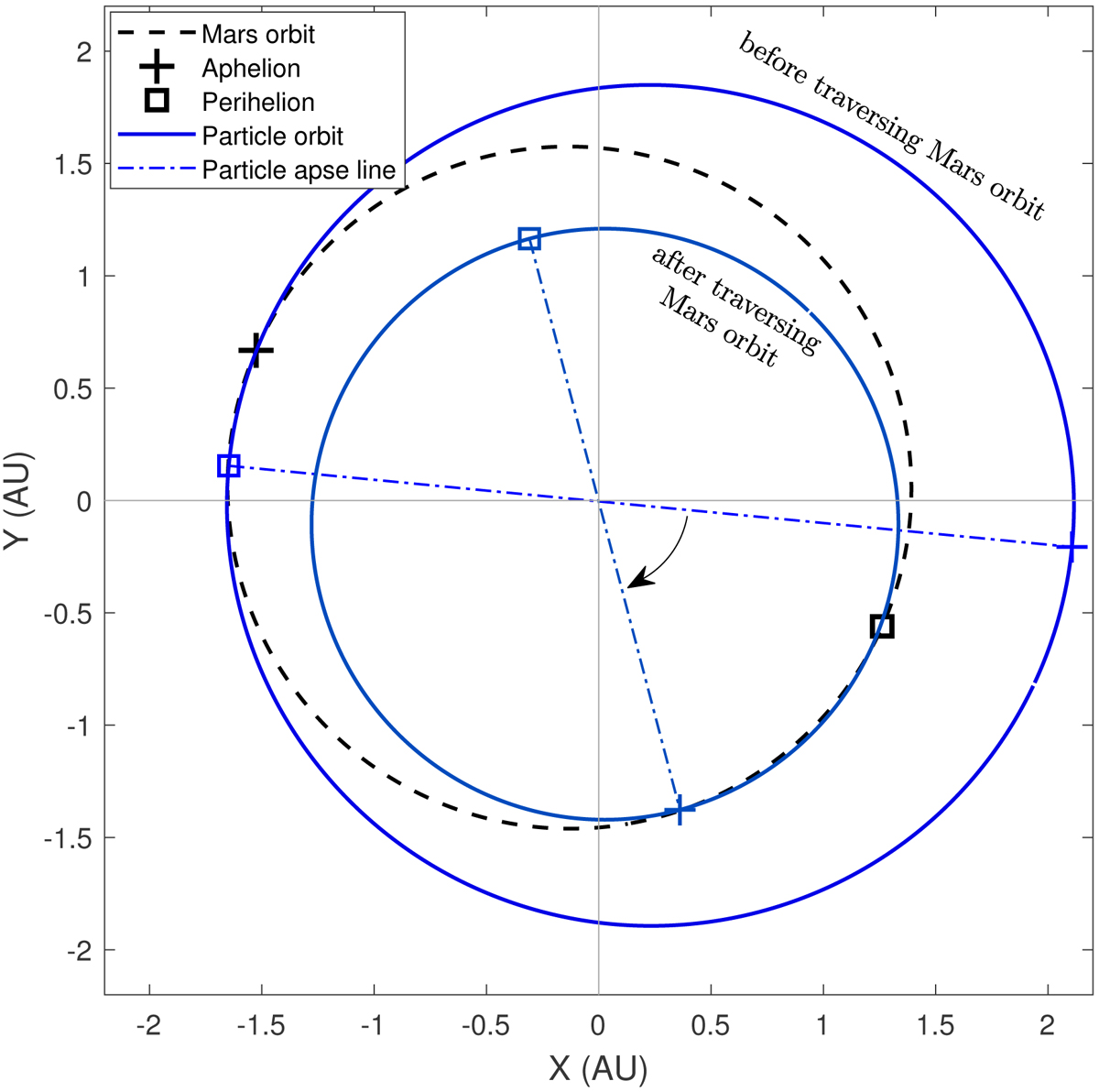Fig. 12.

Apsidal precession of migrating particles as the cause for the double-crescent density pattern generated by Mars (no other planets present, β = 0.005). The figure shows the orbit of an exemplary particle before and after traversing the orbit of Mars. As the particle’s perihelion drops inside the orbit of Mars under PR drag, it starts to experience a negative apsidal drift that is maintained until it revolves entirely within the orbit of Mars. The apsidal drift is causing one side of the trajectory to fall off faster than the other, apparent in the varying gap width between the two orbits. All particles experiencing a drift with preferred final apse line orientation with respect to that of Mars, thus generate a mirrored depletion–enhancement pattern.
Current usage metrics show cumulative count of Article Views (full-text article views including HTML views, PDF and ePub downloads, according to the available data) and Abstracts Views on Vision4Press platform.
Data correspond to usage on the plateform after 2015. The current usage metrics is available 48-96 hours after online publication and is updated daily on week days.
Initial download of the metrics may take a while.


